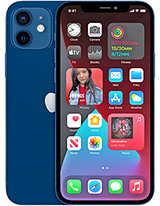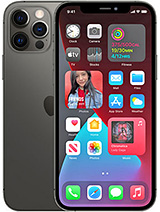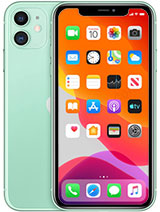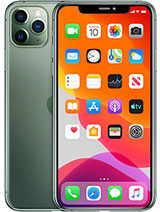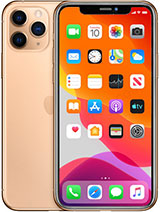Apple iPhone 12 Pro Max full review By GSMArena Official
Hey, what’s up guys, Will here for GSMArena. When looking at this year’s iPhones, the 12 Pro Max is the highest tier model you can get. What does this phone have that the others don’t, and is it worth spending the extra cash for the 12 Pro Max? Let’s find out in our full review. The iPhone 12 Pro Max is like an upscaled version of the iPhone 12 Pro, with a bigger display and battery, but it also has an improved camera setup. It’s also one of the most expensive phones you can buy these days. The 12 Pro Max is made of frosted Gorilla Glass 6 on the back, and just like the other iPhone 12 models, it has a solid ceramic shield glass protecting the display, that’s scratch- and shatter-resistant.
And of course, the whole device is IP68 rated for water resistance too - up to 6 meters underwater. A stainless steel frame holds everything together, and it has a glossy finish that doesn’t provide a whole lot of grip. This plus the phone’s size and heft make it not really ideal for one-handed use. This screen is larger than last year’s 11 Pro Max. It’s a 6.7-inch Super Retina XDR OLED with a pixel density of 458 ppi. It brings a standard 60Hz refresh rate, though.
And, up at the top, is again a wide notch cutout for the selfie cam and 3D scanner. While it is a bit of an eyesore, it’s not quite as offensive on this larger screen as it is on the smaller iPhones. This display is a really nice one, regardless. Blacks are quite deep thanks to OLED technology, and color accuracy is excellent. You get TrueTone automatic white balance adjustments based on the ambient lighting, And the maximum brightness is really good - we measured 822nits.
Using the Pro Max outdoors in the sun is a breeze. For audio, the iPhone 12 Pro Max has a pair of stereo speakers. It's a hybrid setup with one speaker at the bottom and the earpiece acting as the second one. Just like the iPhone 12, the 12 Pro Max scored a Very Good mark in our loudness test. But the audio quality here is the best of this year’s iPhones - it has the deepest bass and the richest mid-tones, and the high-notes are well presented, too.
This year’s iPhones again don’t use a fingerprint scanner, but use FaceID recognition to wake up and unlock the phone. It’s super-fast, reliable, and secure. But your face has to be visible to the camera and 3D scanner for it to work - so no face masks. For storage, the iPhone 12 Pro Max has either 128, 256, or 512 GB onboard, which should be plenty. It isn’t expandable though.
All of the new iPhones come with the latest version of iOS 14, which has also rolled out to older iPhones as well. One of the most notable features you’ll find on iOS 14 is that the home screen supports widgets now, which you can stack to save space. And like Android’s app drawer, iOS has an App Library. When you install your apps, they’ll be found here. And they are automatically sorted into categories.
Picture-in-Picture mode lets you minimize a supported app into a floating window. So you can multitask while keeping an eye on a video you’re watching, for example. And you can assign functions to a couple of new shortcuts, which you’ll access by double or triple tapping on the back of the phone. It's quite handy! One of the major upgrades you’ll find in the new iPhones is the new chipset - Apple’s A14 Bionic, built on a 5nm process. In benchmarks, the iPhone 12 Pro Max beats last year’s model quite handily, scoring about 20% higher in CPU tests.
GPU scores aren’t quite as dramatic an improvement, but they still come out on top. Overall, these are some of the best numbers we’ve seen. And in addition, since there’s a Qualcomm 5G modem onboard, you get access to 5G network speeds as well. And what’s even better is that unlike the smaller iPhone 12s, especially the mini, the 12 Pro Max does a good job as far as thermals go. Though it does get warm, we didn’t notice any thermal throttling with prolonged sessions of benchmarking or gaming.
The iPhone 12 Pro Max also has 6GB of RAM rather than 4GB, and this helps it handle one of its more interesting features - its LIDAR scanning technology, which you will also find on the iPad Pro and the iPhone 12 Pro. The phone’s LIDAR scanner repeatedly fires a laser and measures its reflections with a dedicated sensor to calculate distances. Unlike a regular ToF camera that you’d find on other phones, LIDAR gathers a bunch of points to map out complex surfaces in 3D space. This is useful for augmented reality and measurement apps, as well as for more accurate camera portraits. Now on to battery life.
The Pro Max is powered by a 3,678mAh battery - the largest capacity among this year’s iPhones. It did a great job in our proprietary battery tests, scoring an endurance rating of 95 hours. The Pro max supports fast USB Power Delivery charging, but there’s no charger included in the box this year. With an Apple 20W charger, we were able to take the battery from 0 to 55% charge in half an hour. This year’s iPhones bring support for something called MagSafe.
You can attach magnetic accessories to the back of the phone. This includes things like wallets, as well as the MagSafe wireless charger. It’s kind of neat how the magnetic charger snaps onto the back of the phone, but we weren’t impressed with its charging speed. It charged the smartphone from 0 to 28% in half an hour. Now on to the iPhone’s 12 Pro Max’s 12MP triple camera setup, which offers some upgrades over the likes of the 12 Pro.
While the ultra-wide cam is the same, the main camera has a much larger sensor here, with sensor-shift stabilization rather than OIS. And the telephoto camera, which has OIS, has a longer range with a 2.5x optical zoom. Let’s start off with daylight photos from the main cam. These are good, with high contrast, low noise, accurate white balance, and realistic colors. Dynamic range is wide, yet natural-looking.
However, if you were expecting something much better than the other iPhone 12’s here, the results are pretty much identical. This includes the issues we found with the rendering of fine details. The overall detail level is nice, but complex things like foliage, grass, and window blinds appear smeared and oversharpened when you look closely. Photos from the ultra-wide camera are excellent, with a super-wide field of view, and nice distortion correction. You get great contrast, accurate colors, and a reasonably wide dynamic range.
The detail level is decent, but the foliage rendering is again a challenge. The 2.5x zoomed photos from the telephoto camera are superb. You get high contrast, spot-on colors, and well-balanced dynamic range. You get plenty of resolved detail, too, and while the foliage can be hit or miss, the problem spots are not as apparent as on the main camera. Portraits on the 12 Pro Max are something special thanks to the LIDAR scanner’s depth mapping.
They’re shot with the telephoto cam by default, and they are excellent, with great detail, contrast, and colors. The subject separation is spot on, and the defocused backgrounds are pleasant, too. Now on to low light photography. Night mode triggers automatically in low-light scenes, and works even faster than on the 12 Pro. You hold the camera still for just 1 second.
And these shots from the main cam are admirable. They’re detailed, with low noise, balanced exposure, and well preserved, saturated colors. The highlights are handled very well too, and shadows look realistic. Portraits can be shot in Night Mode, with the main camera. These are simply outstanding.
There’s plenty of detail, very low noise, excellent subject separation, and lovely looking backgrounds. The exposure is plenty bright, and the colors are fantastic. The ultra-wide camera also supports night mode, and these shots are okay. They have a balanced exposure, a decent amount of detail, and preserved highlights. They are overall soft-looking though - so far from great, but still quite usable.
The telephoto camera sometimes works at night. Depending on the available light, you’ll either get a shot from this camera or a digital zoom from the main one. The telephoto shots are excellent, with a lot of fine detail, well-handled noise, natural colors, and good contrast. Even though there’s no night mode support, we don’t really miss it. So are the 12 Pro Max’s upgraded cameras worth paying money for over the iPhone 12 Pro? Honestly, we compared the two, and in Auto mode the differences are really small.
On the 12 Pro Max the night mode is faster, and you get lower noise with nighttime portraits. But the rest is basically the same. Since there are noticeable differences if you compare photos taken in RAW format, it’s probably the image stacking and the heavy camera processing that levels the playing field between the iPhones. Now on to selfies, taken with the 12MP front-facing cam. You can take a 12MP selfie, or a cropped-in 7MP one with tighter framing.
The quality here is excellent, with rich detail, true-to-life colors and dynamic range, and well-handled noise. Thanks to the 3D scanner on the front, selfie portraits are great, with impressive separation and defocused backgrounds. These come out in the cropped 7MP field of view. You can shoot selfie videos in 4K resolution, and these are excellent, with very good detail.4K videos captured with the main rear camera are great as well. There’s nice contrast, low noise, outstanding dynamic range, and accurate colors and white balance.
There’s enough detail, though the foliage looks overprocessed - but this isn’t really a big deal here.4K footage from the ultrawide cam has super dynamic range, colors, and contrast, but the resolved detail is just mediocre. And videos taken with the telephoto cam are excellent - with low noise, true-to-life colors, and impressive contrast and dynamic range. You get rich detail, and the foliage looks better than it does on the main cam. Low-light 4K videos from the main cam are great - they are detailed enough, and have pleasant colors and well-handled noise. Like the other iPhone 12 models, you can capture HDR videos in the Dolby Vision dynamic HDR video format.
If you do, the videos will still look normal on a non-HDR screen, since the Dolby Vision information is saved separately. And there’s electronic stabilization available on all cameras, in all resolutions. It’s fantastic, as you’d expect from an iPhone. So that’s the iPhone 12 Pro Max. As you’d expect, you get all the bells and whistles, like premium and extra-durable build quality, a large, bright OLED screen, stereo speakers, great battery life, chart-topping chipset performance, and an excellent and versatile set of cameras.
This doesn’t come cheap though, and to be honest, you get most of these features in the less expensive iPhones. The iPhone 12 pro in particular offers a very similar set of features, including the LIDAR scanner. Even the cameras, when in Auto mode, get you pretty similar results. But there are still plenty of reasons to like the 12 Pro Max. If you want the 2020 iPhone with the biggest screen, the best battery life, solid thermals for gaming, and the potential to take the best photos, if you’re into tinkering with the RAW format, the iPhone 12 Pro Max is worth recommending.
Thanks for watching guys, stay safe and see you on the next one.
Source : GSMArena Official

